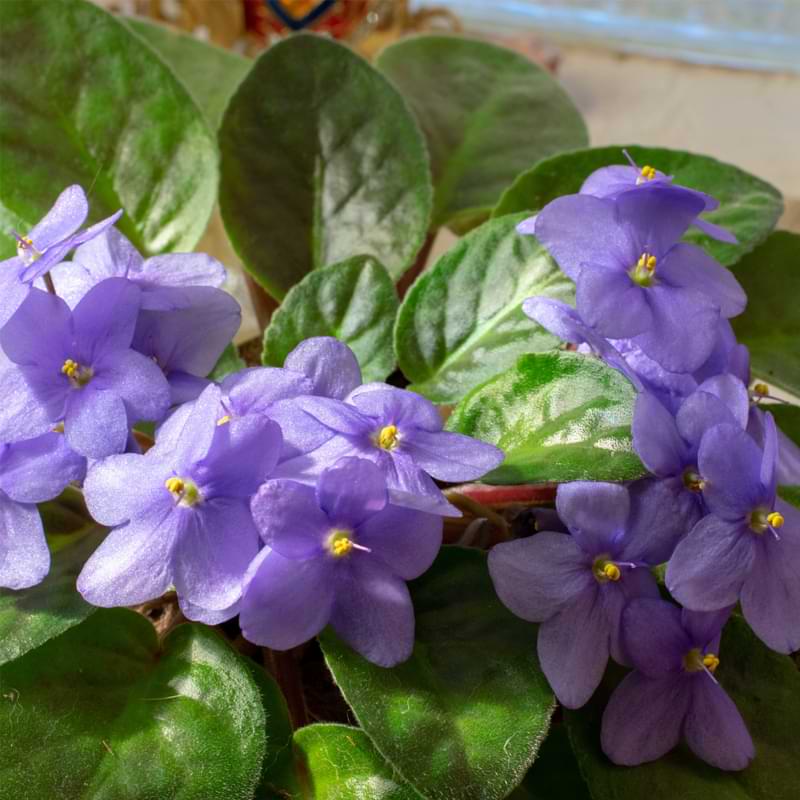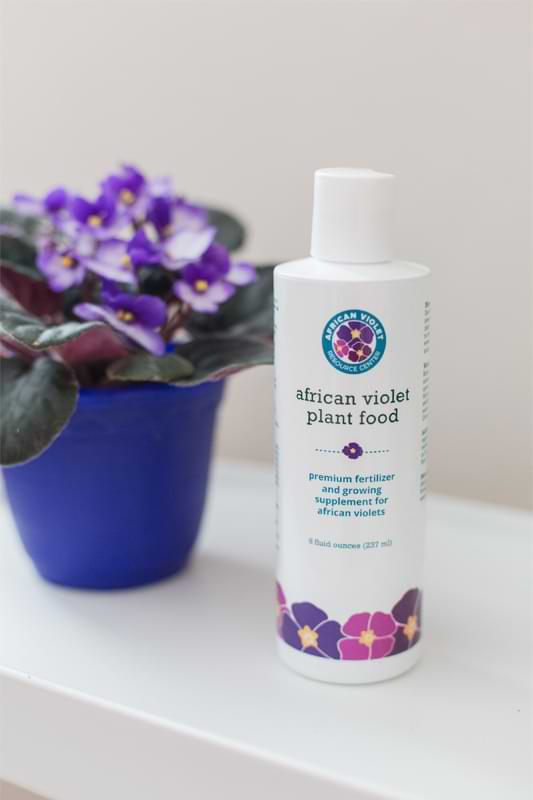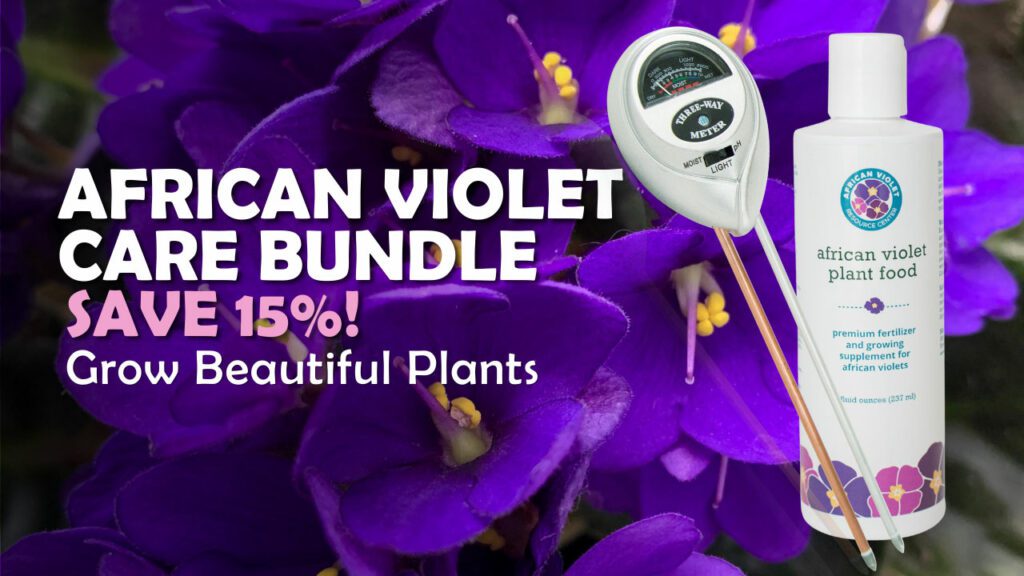One of the most popular small and compact houseplants is the African Violet. If you have a small space that needs the touch of a beautiful plant, the African Violet might be a good choice for you. But just how big do African violets get? Let’s take a look at the average size of an African violet and how to care for them so they stay healthy and happy. We’ll also touch on some of the different African violet size categories.
How Big Do African Violets Get
African violets typically range in size from six to eighteen inches or more in both height and width, with some varieties getting even larger, and can be found in a variety of colors, including white, blue, purple, pink, and red.
African Violet Size Categories
There are four size categories for African violets: Large, Standard, Semi-Miniature, and Miniature. Each category typically has leaves that are proportionate to the plant’s size, and most of the time with proper care and maintenance, they can live for 50 years or more!
Large
Large African violets can grow up to 18 inches tall and 24 inches wide, with leaves that average about 6 inches in length. They produce an abundance of 3-inch blooms, making them a showstopper in any room. If you’re looking for a plant that makes a statement, then a large African violet is the perfect choice.
Large African violets can live a rather long life, and some people even say they could live indefinitely if taken care of properly. The main growing season for this plant is spring and summer even in a temperature-controlled environment, simply because plants are great at picking up on the limited daylight in fall and winter.
Standard
Standard African violets (Saintpaulia ionantha) are the most common type of African violet. They typically grow to be about 8-16 inches in diameter and have relatively small leaves that average 3 inches in length. The flowers of a standard African violet are usually purple, but can also be white or pink, and are typically 2 inches across.
The standard African violet will bloom regularly in the summer, and the blooms will dwindle as fall rolls into winter. To achieve year-round blooms, consider using a grow light that gives the plant at least 10 hours of light per day, or less depending on the type of grow light you want to use.
Semi-Miniature
Semi-miniature African violets typically grow to be between 6-8 inches tall and wide. They have slightly smaller leaves, usually about 2 inches long, and the flowers are typically 1.5 inches across. The semi-miniature is the perfect option to dress up your side table with some beautiful color.
Semi-miniature African violets also have the same light requirements to produce plenty of blooms. This size will begin blooming in the spring and summer during the growing season, and blooms will stop in fall and winter unless given adequate lighting.
Miniature
While they may be petite in size (typically only 6 inches tall and wide), miniature African violets still pack a punch when it comes to color and bloom production. And thanks to their smaller stature, they’re much easier to care for than their larger cousins. The leaves of the miniature African violet are only 1 inch long, and the flowers are typically only 0.75 inches across.

African Violet Care For Maximum Growth
Many people are surprised to learn that African violets are not really violets at all; they are a member of the Gesneriad family. Therefore, they have different care requirements than actual violets may need.
Position & Light
This beautiful houseplant needs bright, indirect light. The ideal spot for an African violet is near a south- or west-facing window. If you don’t have a spot like that in your home, you can grow them under fluorescent lights.
Temperature & Humidity
African violets do prefer a consistent temperature. They like to be in a room with an average temperature of 68-72 degrees Fahrenheit. They also like humidity levels to be around 40-50%. If the humidity is too low, the leaves will start to turn brown and crisp, so make sure to either mist them a couple times per day, or have a humidifier close by.
Watering Requirements
As with most plants, African violets need the right amount of water to grow and thrive. Aim for a regular watering schedule somewhere between 7-10 days, but you will need to “listen” to your plant to make sure your watering schedule is working for it.
If you’re unsure whether your African violet needs watering, stick your finger into the soil up to your first knuckle. If the soil feels dry, it’s time to water. On the other hand, if the top of the soil is still wet, hold off on watering for a bit. If you’re still unsure about how often to water your plant, a moisture meter would help you take out the guesswork so you can give your plant the right amount of water when it needs it.

Fertilizing
Fertilizing is an important part of keeping your African Violet healthy and blooming. African Violets need to be fertilized every two weeks with a water-soluble fertilizer, or with our African Violet Plant Food specifically designed for this beautiful plant.
Flowering
Your African violet will produce gorgeous flowers according to the size plant that you have. If you have a miniature African violet, you will typically get flowers that are less than an inch in diameter, but that are just as beautiful as the flowers of a bigger variety.
Semi-miniature plants will give you flowers that are about 1.5 inches in diameter, standard plants will produce 2-inch flowers, and large plants will produce blooms up to 3 inches. These flowers can be a range of colors, depending on the variety you choose. Some favorites are deep purple, blue, and white.
To encourage flowering, make sure you are giving your plant the nutrients it needs, as well as the proper amount of light and dark.
Deadheading African Violets
Deadheading African violets is a process of removing spent blooms from the plant to make the plant look better and to encourage new growth. It is a simple task that can be done with a sharp pair of scissors or pruning shears.
To deadhead an African violet, remove the bloom at the base of the stem, being careful not to damage the leaves. If there are any leaves attached to the bloom, remove them as well. Repeat this process until all of the spent blooms have been removed.
When to Repot
If your African violet is looking cramped in its pot, it may be time to repot it. Here are a few signs that it’s time to give your plant some more room:
- The leaves are crowded and falling off
- The roots are coming out of the drainage holes
- The plant is top-heavy
If you see any of these signs, it’s time to repot your African violet into a larger pot. Choose one that’s only 2-3 inches wider than the current pot. Be sure to use fresh potting mix and water well after repotting.
Propagation
African violets are typically propagated by leaf cuttings. To do this, take a sharp knife or scissors and cut a leaf off at the base, making sure to include a bit of stem. You can then either pot the leaf directly into moistened soil, or place it in water until roots develop. To encourage faster root growth, you can dip the end of the cut stem into a rooting hormone before placing it in soil.
Once rooted, the leaf cutting can be transplanted into a pot of its own. African violets typically bloom six to eight weeks after being propagated.
Common Pests and diseases
There are a variety of pests and diseases that can affect African violets. Some of the most common include:
-Mealybugs: Mealybugs are small, white, wingless insects that feed on plant sap. They can cause stunted growth and yellowing of leaves.
-Spider mites: These tiny spider-like creatures suck the sap from leaves, causing them to become yellow and mottled. Severe infestations can kill plants.
-Fungal diseases: Fungal diseases such as powdery mildew and gray mold can cause leaves to discolor and drop off. They can also spread quickly, so it’s important to treat them early.
African Violet Sizes Final Thoughts
As you can see, African violets come in a range of sizes. Some are small enough to fit in the palm of your hand, while others can grow up to a foot wide. There is no one-size-fits-all answer to the question of how big African violets get. The size of your plant will depend on the variety you choose and how well you care for it. No matter the size, African violets are the perfect addition to any houseplant collection!You can find more information on African violets when checking out our African Violet Resource Center page or joining our Facebook group!







